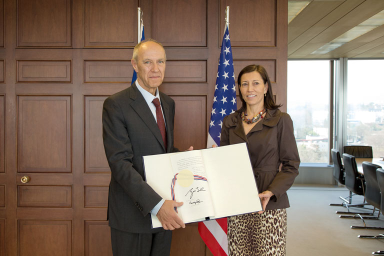The Hague Agreement is the international filing system for design protection that corresponds to the PCT filing system for international utility patent protection and the Madrid filing system for international trademark protection. The progress of the United States toward membership and participation in the Hague Agreement has been slow and at times tortuous. As I blogged here, President Clinton signed the treaty in 1999. Many years passed before the Senate ratified it in 2007. Congress needed to pass enabling legislation which finally happened in 2012. Next the USPTO needed to promulgate proposed Rules, which it did in 2013. The next important step was for the United States to deposit an “instrument of accession” to the Agreement with WIPO.
Interestingly somehow the United States and Japan managed to coordinate their efforts, and the two countries deposited their instruments of accession on the same day, Friday, February 13, 2015. You can see WIPO’s press release here.  And at right is a photograph (courtesy of WIPO) showing the historic event. You can see US Ambassador Pamela Hamamoto handing the Instrument of Accession to WIPO Director General Francis Gurry.
And at right is a photograph (courtesy of WIPO) showing the historic event. You can see US Ambassador Pamela Hamamoto handing the Instrument of Accession to WIPO Director General Francis Gurry.
Continue reading “US makes more progress toward the Hague Agreement”

